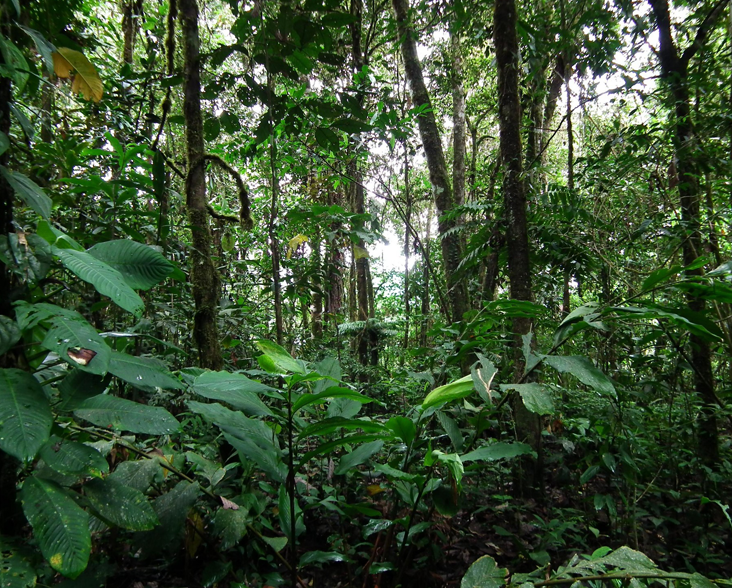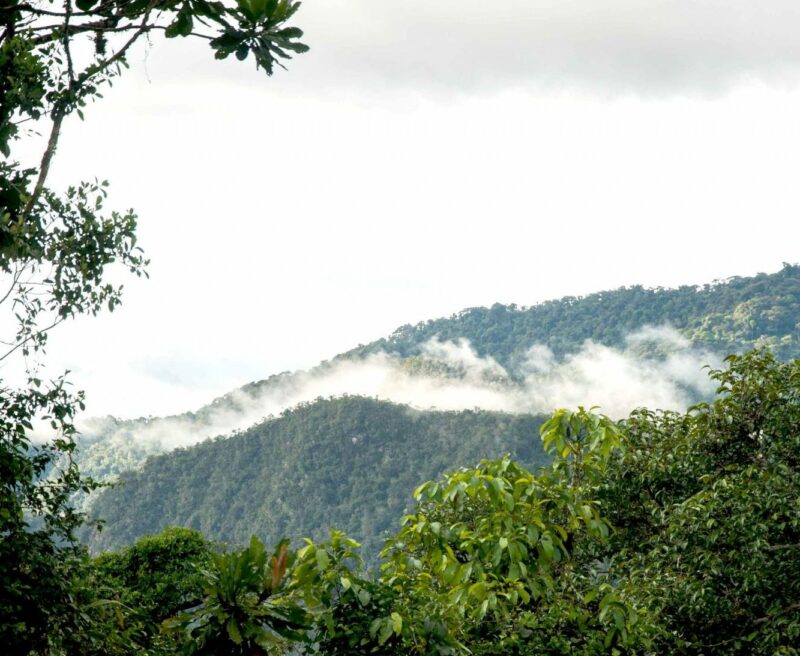Podocarpus – El Condor Biosphere Reserve
Ecoregion: Ecuadorian Dry Forest
Key Species: Mountain Tapir, Spectacled Bear, Ocelot, Puma, White-necked Parakeet
Podocarpus – El Condor Biosphere Reserve is a network of protected areas that covers more than 2.6 million acres of habitat in southern Ecuador. Key forests surrounding the gap are protected within the Podocarpus National Park and by a reserve established by the Zamora Municipality to safeguard water resources in sub-catchments of the River Nea.
The support of the Carbon Balanced programme has enabled World Land Trust (WLT) partner Naturaleza y Cultura Ecuador (NCEcuador), to purchase a group of properties within the wider biosphere reserve that NCEcuador aims to secure through land purchase and payments for ecosystem services.

The 276 acre (112 hectare) property forms part of the existing Reserva Biologica San Francisco situated in the north of Podocarpus – El Condor Biosphere Reserve. It consists of tropical mountain forest and borders NCEcuador’s San Francisco Private Reserve, which means it helps to consolidate a biological corridor between Podocarpus National Park and Bosque Protector Corazon de Oro. The reserve is home to the White-breasted Parakeet (Pyrrhura albipectus), which is endemic to southern Ecuador and northern Peru.
The Jambué Rainforest Reserve falls within a strategic gap in the protected area network that forms Podocarpus – El Condor Biosphere Reserve. There is an outstanding diversity and endemism in several families of flowering plants here. Epiphytes are especially abundant within the canopy and scientists have registered more than 100 species in a single tree. Some 74 per cent of the Jambué Rainforest Reserve remains covered by undisturbed primary forest.


Known locally as the Maycu Reserve, Nangaritza protects foothill rainforest of the Nangaritza Valley, Zamora Chinchipe province, connecting the Andes and the Amazon
Since 2012, WLT has been working steadily with NCEcuador to fund the purchase and protection of land within the River Nangaritza valley, a complex mosaic of ecosystems including Amazonian lowlands, Andean foothills and Sandstone plateaus similar to Venezuelans “Tepuys” (table top mountains).
The area is considered to be one of the world’s most important sites for biodiversity, with more than 600 bird species and 3,500 species of plant, 40 per cent of which are endemic to the region. Flowering plants and ferns are particularly noteworthy.
Regional biodiversity levels are exceptional, with three distinct ecosystem types of global conservation priority – the Tumbesian Dry, Andean and Upper Amazonian Forests – being represented within the Podocarpus-El Condor Biosphere Reserve.
Set on the eastern slopes of the Andes, but occupying a relatively lower-altitude ‘saddle’ within the mountain range, the area acts as a corridor through which a subtle east-west flux of plant and animal species can be seen.
Large mammals and birds are also extremely well represented here, including the Endangered Mountain Tapir (Tapirus pinchaque), Ocelot (Leopardus pardalis), Puma (Puma concolor), White-necked Parakeet (Pyrrhura albipectus) and Coppery-chested Jacamar (Galbula pastazae), both classified as Vulnerable by the IUCN Red List of Threatened Species.

Avoidance of greenhouse gas emissions and carbon sequestration are only two of the ecosystem services provided to local people and the global community by forests within the Podocarpus-El Condor Biosphere Reserve. The Nea River supplies 10,000 residents of Zamora and other downstream settlements with a stable flow of clean water throughout the year and the forests in its headwater areas are the key to this.
In 2010, the Municipality of Zamora became part of the southern Ecuador Regional Water Fund (FORAGUA), a financial trust developed by NCEcuador and seven regional Municipalities. Through this, a levy on water users will be used to protect and manage habitats of conservation value that play a direct role in the supply of water to local residents.